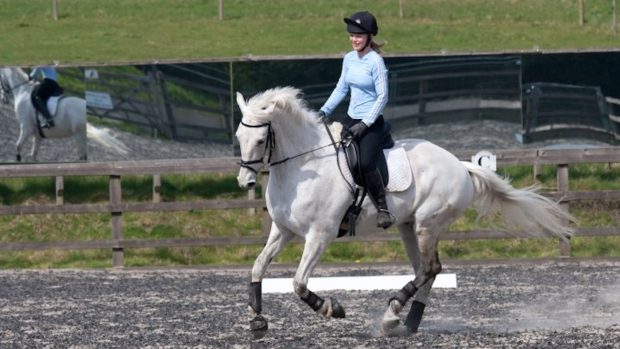Extensive research is under way taking a holistic look at spinal injuries in jockeys, with a view to preventing these in future.
Physiotherapist and University of Bath PhD student Daloni Lucas gave an overview of the projects that come under the umbrella of the analysis of prevention of spinal injuries in horse racing, at the Injured Jockeys Fund (IJF) conference (26 April). The research, funded by the Racing Foundation, is a collaboration between Bath University, the British Horseracing Authority and the Irish Horseracing Regulatory Board.
“In racing, there’s very little evidence that investigates the mechanisms of spinal injury,” Ms Lucas told H&H.
“So for example, there are studies that report the epidemiology, which is the sort of incidence and prevalence of spinal injuries in equestrian sports. But no previous researchers look to the aetiology [causes or reasons] to get an understanding of exactly how and why the injuries are happening, not just reporting that they are and the rate of injury.”
She added: “First, you need to understand how big the problem is and then you need to understand exactly why they’re happening. And with those two things, you can look at prevention strategies, but without understanding why they’re occurring, you can’t actually inform injury prevention.”
Individual studies beneath the umbrella include analysing 700 videos of falls, taking into factors including race type, environmental conditions such as the ground and the fence, and a person’s health and medical history alongside looking at the biomechanics of the fall itself. For every person who sustains a spinal injury in a fall, the study will look at four who did not, to try to pin down the significant variables that contribute to injury.
The next step, which will be undertaken by another PhD student, will be computerised spinal injury simulations.
The research has also led Ms Lucas to explore the current use of safety wear in racing, which is also helping in the development of body protectors and a push towards education of how they should fit.
Ms Lucas found that “alarmingly”, 64.3% of jockeys who responded had not been fitted for their current body protectors, and more than a third of those tested were not wearing the right size.
This has led to “lots of positives”, including adding weight to a push on education and also on getting fresh feedback from jockeys in terms of the flexibility and comfort, alongside protection they want and need in a body protector.
Racing’s body protector rules changed in 2017 in Ireland and 2018 in Britain, increasing the minimum standard from BETA level one to level two.
Racesafe, which produces BETA level two-standard body protectors, has produced prototypes informed by the research and the jockeys’ feedback.
Racesafe’s James How told H&H the research is “good timing”.
“From our point of view, the technology and the materials have developed and progressed sufficiently from 2017/18, which means we can look at developing an updated model,” he said.
“Now we are at the stage where we can offer the same level two protection in a new product that is lighter, more comfortable and a bit thinner.”
He added that Racesafe offers a vastly expanded range of sizes to suit different body shapes, and in-house alterations to ensure the garments fit well.
Racesafe’s retailers are all trained, and the firm is looking to educate jockeys further on licensing courses and valets, who care for and often procure equipment for their riders.
“[Correct fit is] critical,” said Mr How, adding that this covers protection, comfort and flexibility.
“There’s no way around it. It is all very well us developing a product that’s offering a certain level of protection and comfort, but if it isn’t covering the areas it needs to, it of course isn’t going to offer the same level of protection.”
You might also be interested in:

Subscribe to Horse & Hound magazine today – and enjoy unlimited website access all year round

‘They don’t go to hospital unless something’s hanging off’: research shines light on equestrian-related injuries

Riders support research giving signs of hope for those with spinal-cord injuries

Dark clouds or a bright future? Why the sport must work together on mental health
Horse & Hound magazine, out every Thursday, is packed with all the latest news and reports, as well as interviews, specials, nostalgia, vet and training advice. Find how you can enjoy the magazine delivered to your door every week, plus options to upgrade your subscription to access our online service that brings you breaking news and reports as well as other benefits.





